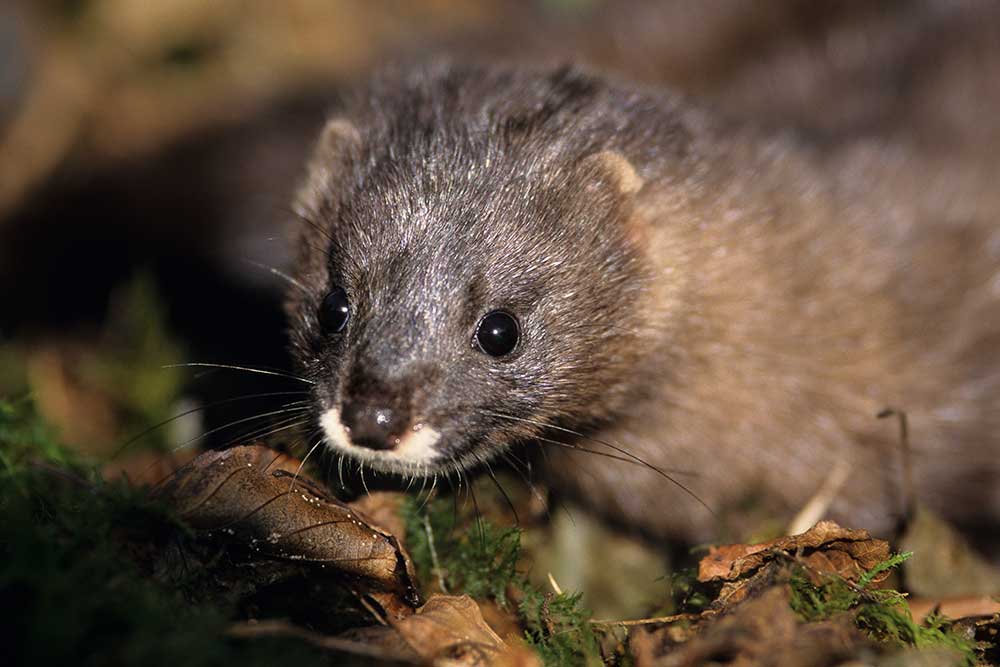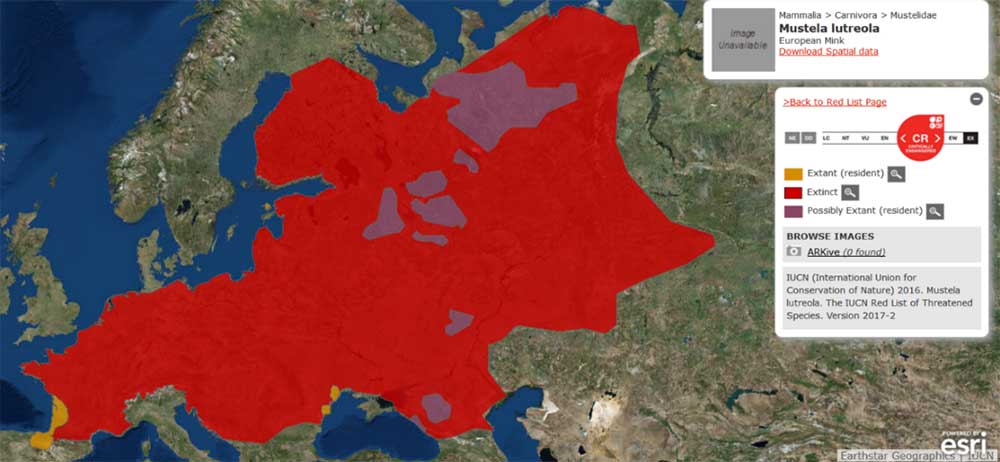Who is the European Mink?
European Mink (Mustela lutreola) is a small carnivorous mammal. Part of the Mustelidae family, it is smaller than the Putois and larger than the Weasel. It is distinguished from other species by its uniformly dark brown coat and gray-brown fur. It has a characteristic white patch on its muzzle, running across its upper lip and lower lip. As with most members of this family, there is sexual dimorphism, males weighing around 850 g are larger than females weighing 500 g.

European Mink (© Gilles Martin / LPO)
Cri Vison d'Europe
Where does he live?
Only present in wetlands, the European Mink frequents forest or agricultural watercourses, floodable woodlands, marshes, wet meadows and streams… The presence of a mosaic of different types of wetlands which offers a wide availability of prey linked to the aquatic environment throughout the year constitutes an important asset for our small generalist predator which feeds on amphibians, small mammals, fish and birds. Furthermore, the presence of a low and dense plant layer in partially or completely flooded environments such as sedges, rushes, reeds and brambles is essential to guarantee sufficient shelter, particularly for its roosts.

Alluvial woodlands, European mink habitats – © Alexis Orseau / LPO
Once widespread in Europe, its global distribution is now limited to a few isolated and declining populations in Eastern Europe (Russia, Ukraine, Romania and Estonia) and a population located in northern Spain and southwestern France (7 departments). The European mink has lost 85% of its original range since the mid-19th century, and the total number of minks is estimated to have declined by at least 90% during the 20th century.

Historical and current distribution of the European Mink (Source : UICN, 2016)
How does he live?
The European Mink defends its territory, it is said to be territorial. The male and female live apart for most of the year and meet up during the rut. Although it is small, the species occupies vast territories which are generally linear along watercourses and can thus extend from 3 to 15 km per individual. We are talking about home ranges. Those of males often cover the territory of several females. Males also demonstrate great mobility during the rutting period, some can change watershed and travel up to 70 km as the crow flies.
The breeding period, called the rut, takes place between the beginning of January and the end of February in Western Europe. After a gestation of 39 to 44 days, European minks give birth to a single litter per year between April and June, ranging from two to five young.
The female alone raises the young, which are weaned after about ten weeks and reach sexual maturity the year following their birth.
LIFE Vison
The European mink
It is a carnivorous mammal belonging to the Mustelidae family. It is classified as “critically endangered” according to IUCN’s Red List of threatened species.
Beneficiary coordinator

Associated beneficiary

Partenaires financiers

With the financial support of

Contact
LIFE VISON Project Coordinator
Ingrid Marchand
Phone :
+33 5 46 82 12 45
Adress
LPO – Les Fonderies Royales
8-10 rue du Docteur Pujos
CS 90263 – 17305 Rochefort – France
